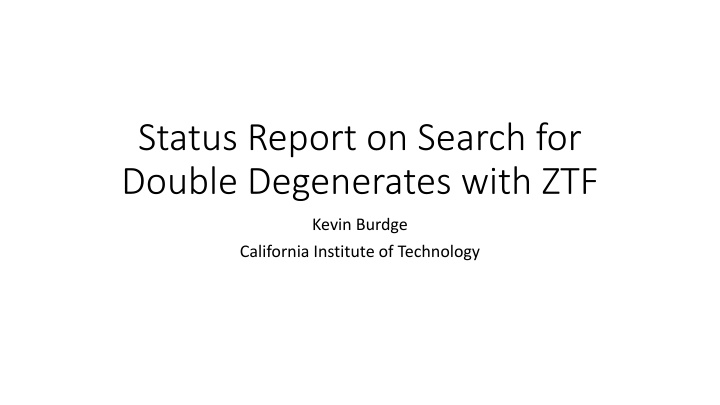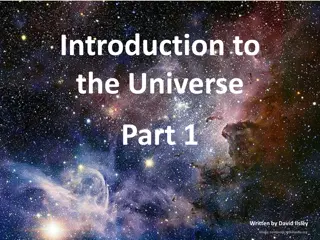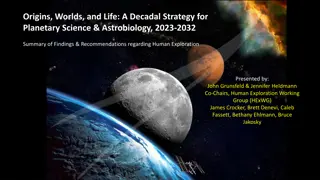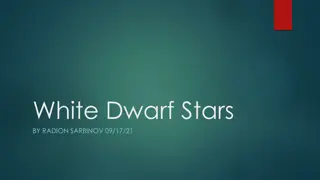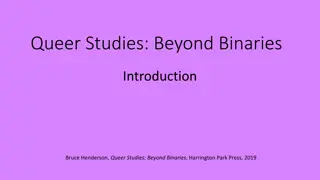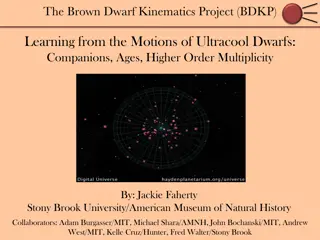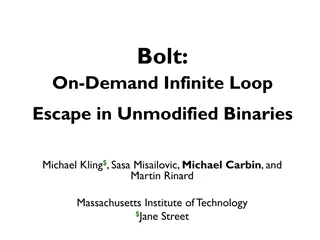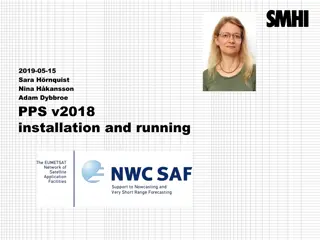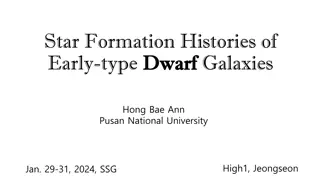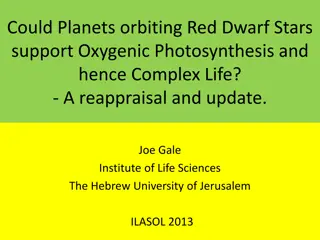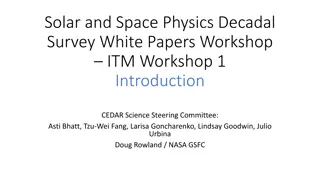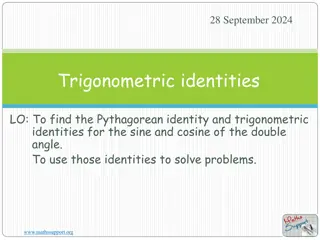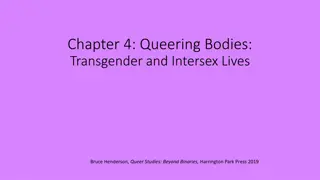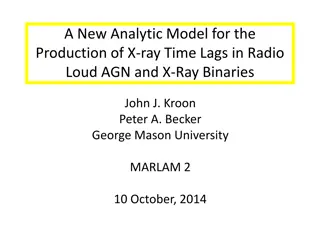Exploration of Double Degenerates in White Dwarf Binaries
The search for double degenerates in white dwarf binaries involves techniques like eclipses, ellipsoidal modulation, and irradiation of companions. Discoveries such as an orbital period of 20 minutes, orbital decay measurements, and technical challenges in data processing using GPUs are highlighted. The role of ZTF in finding new eclipsing systems and the significance of gravitational radiation in determining chirp mass are discussed.
Download Presentation

Please find below an Image/Link to download the presentation.
The content on the website is provided AS IS for your information and personal use only. It may not be sold, licensed, or shared on other websites without obtaining consent from the author.If you encounter any issues during the download, it is possible that the publisher has removed the file from their server.
You are allowed to download the files provided on this website for personal or commercial use, subject to the condition that they are used lawfully. All files are the property of their respective owners.
The content on the website is provided AS IS for your information and personal use only. It may not be sold, licensed, or shared on other websites without obtaining consent from the author.
E N D
Presentation Transcript
Status Report on Search for Double Degenerates with ZTF Kevin Burdge California Institute of Technology
How do we find White Dwarf Binaries Eclipses Ellipsoidal modulation Irradiation of companion 2 J0651, a 12.75 minute binary (Brown et al. 2011)
Before ZTF Discovered one double degenerate in PTF The system exhibits a 20 minute orbital period, ellipsoidal modulation, Doppler boosting, and significant orbital decay 3
Orbital Decay After waiting 1.5 years, we have measured, with significance, the orbital decay of this system. The inferred chirp mass is rather large (~0.4 solar masses), indicating that this is likely a loud LISA source given its parallax measurement.
Technical Challenges and Solutions Searching for short periods in long baseline data is computationally expensive Graphics Processing Units (GPUs) can largely outperform CPUs in such searches For the shortest orbital period systems, we must account for orbital period decay Nvidia 1080 Ti GPU (image from Nvidia.com) 5
Our Test Run with ZTF On the right, is a ZTF commissioning lightcurve of J0651, the 12.75 minute binary The primary eclipse is clearly visible 6 J0651 in ZTF
ZTF Science Results There are 6 published eclipsing detached DWDs So far with ZTF, we have discovered 5 new eclipsing systems (with a possible 6th candidate) In the remainder of this talk, we will highlight them
The 7 Minute Binary Paper submitted First candidate we found Exhibits strong reflection effect and eclipses
Orbital Decay Measurement on the 7-minute Using archival PTF data, we managed to make a highly precise measurement of the orbital decay due to GR in this system
A new candidate at ~8 minutes Appears likely to be a binary candidate based on position on HR diagram. More follow up still needed. If real, would be highest SNR LISA source known (has a reasonably good parallax measurement)
24 Minute Eclipsing System Eclipses are comparable depth, indicating that the two components contribute comparable luminosity Appears to be double lines from spectrum, but will be very challenging to fit due to two blended broad absorption lines Estimated LISA signal quite marginal
40 Minute Eclipsing System Again, eclipses appear to be comparable in depth, suggesting comparable luminosity contribution No spectrum yet. Likely to have a marginal LISA signal
The future: SDSS V and Beyond Spectroscopic follow up of these systems is challenging. The 24 minute for example, because of its double lined nature, does not appear to have significant Doppler shifts, but rather seems to change in log(g) and Teff as the Balmer lines widen and narrow . This could perhaps be used to target such systems. Systems like the 20 minute binary, which are single lined, exhibit enormous radial velocity variations (620 km/s semi- amplitude in the case of this example). Even for low resolution surveys, this should be easy to resolve. However, exposures must be short.
